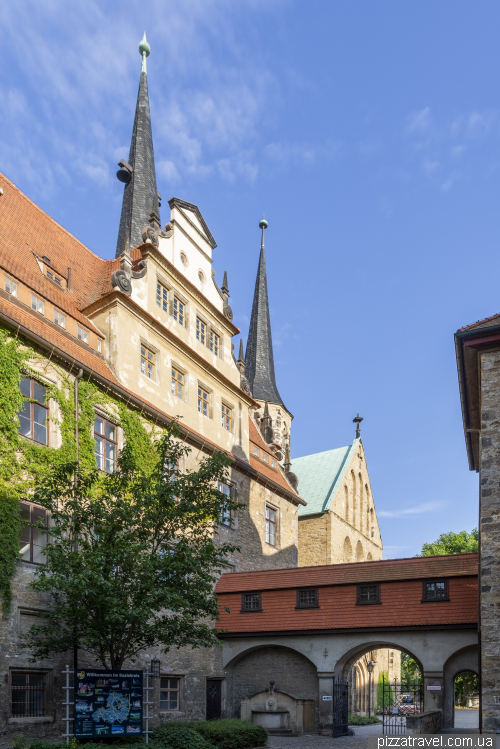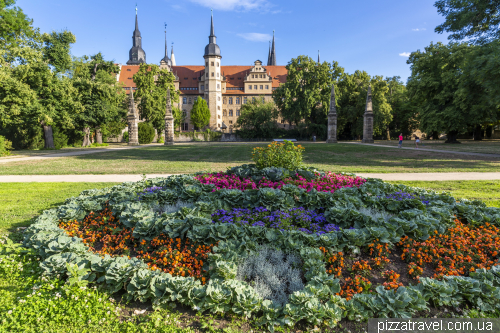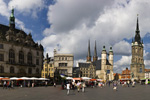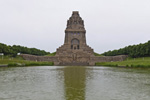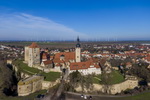The town played a significant role in the Middle Ages, where important political decisions were made and links with other countries were established, but it is completely unknown nowadays.
On one side of the castle is the Merseburg Cathedral, which was founded in 1015 and consecrated in 1021 in the presence of Henry II, Holy Roman Emperor. A bishopric had already existed in Merseburg since 968.
At the beginning of the 16th century, the castle-palace was rebuilt by the episkop Tila von Trote and the cathedral was transformed from a basilica into a late Gothic and Renaissance temple. There is a cage of crows in the courtyard, which is associated with those times. The legend says that the episcopus had a precious ring stolen from him. On suspicion of the theft, one of the servants was executed, but after some time, a crow's nest was discovered on the roof, in which the ring was found. Since then, the raven has been included in the bishop's coat of arms.
The Thirty Years' War was followed by a new rebuilding, this time in the Baroque style. The different styles are best seen in the courtyard.
The park in front of the castle is fairly simple, but spacious.
We took another walk along the river.
Evening photos. The town is almost empty during the day, and in the evening, there is no one at all on the streets.
Getting there: parking in the centre 51.359500, 11.998778. There is a railway station Merseburg Hbf.








